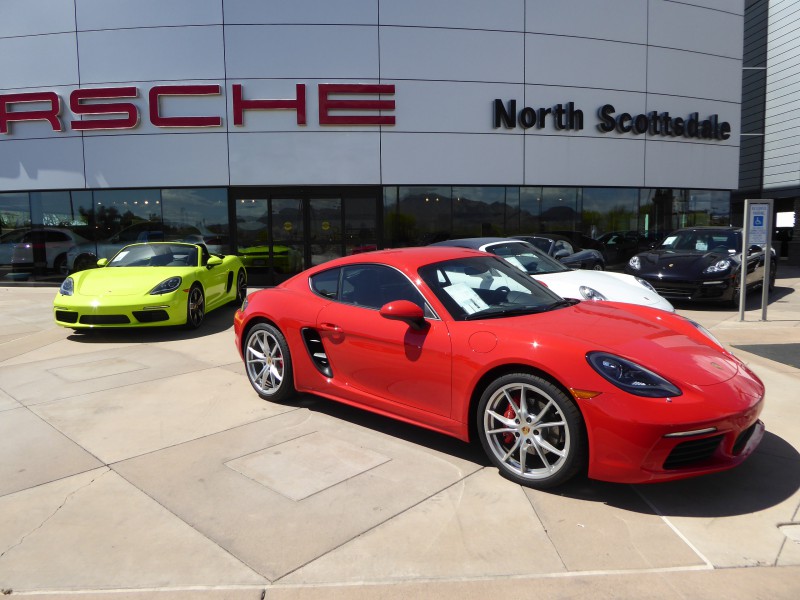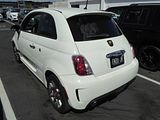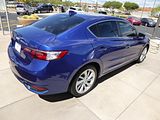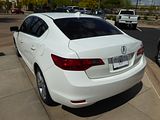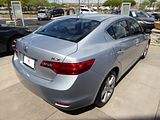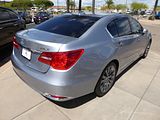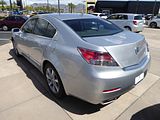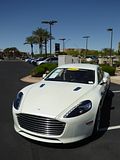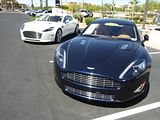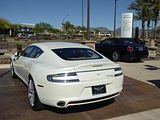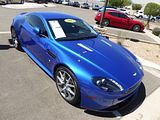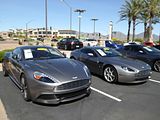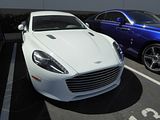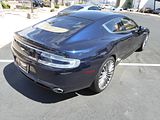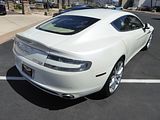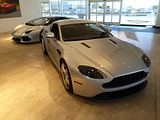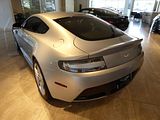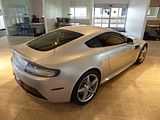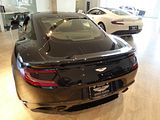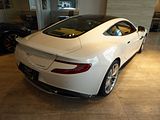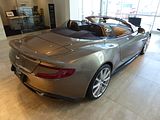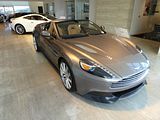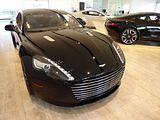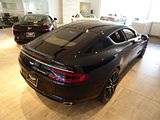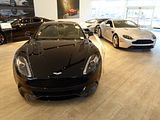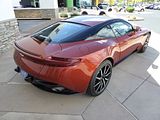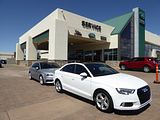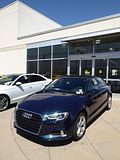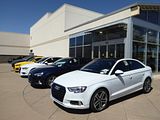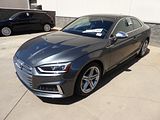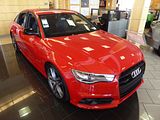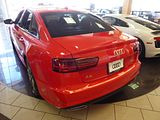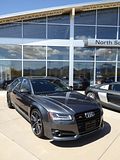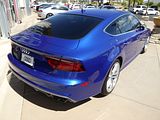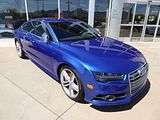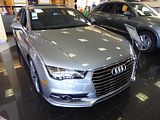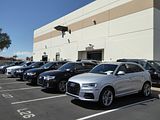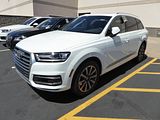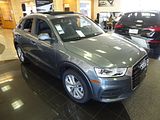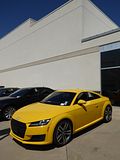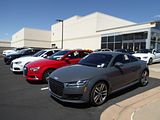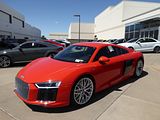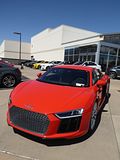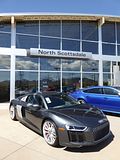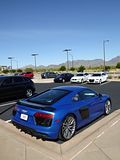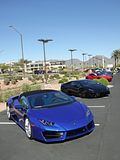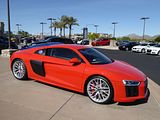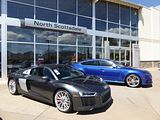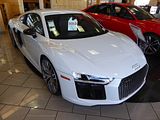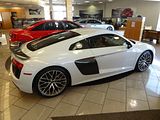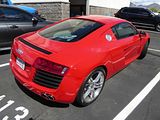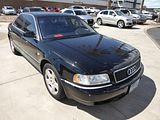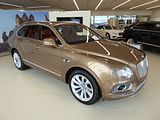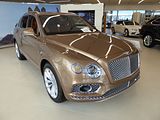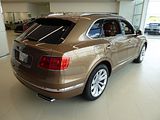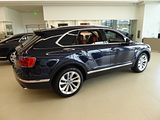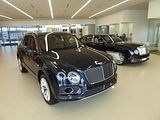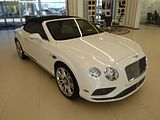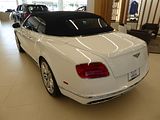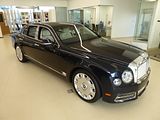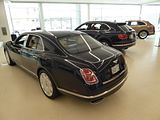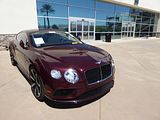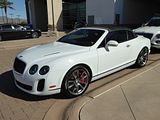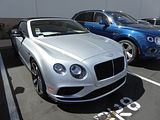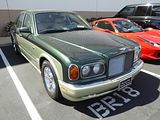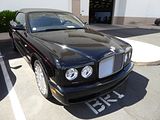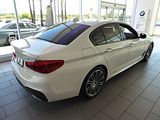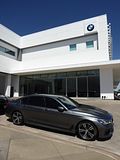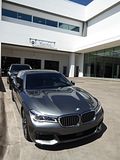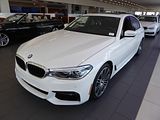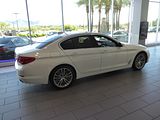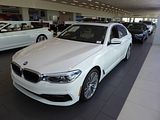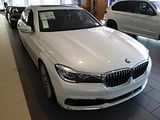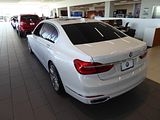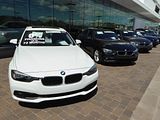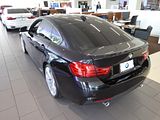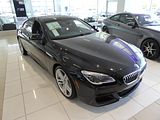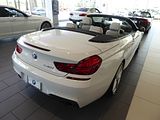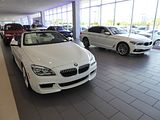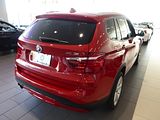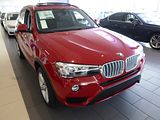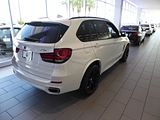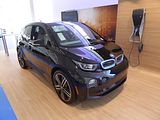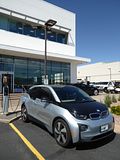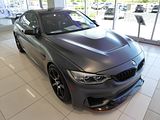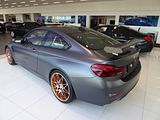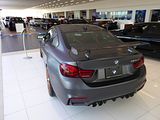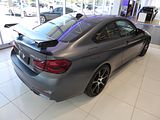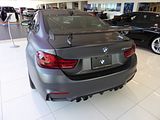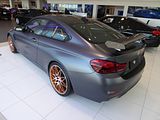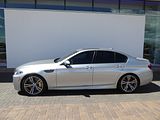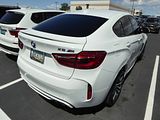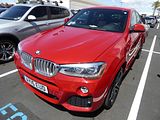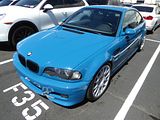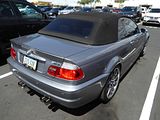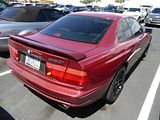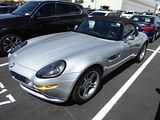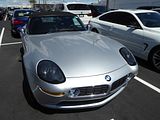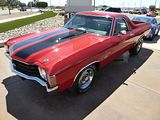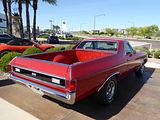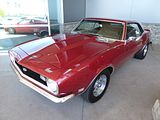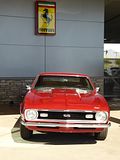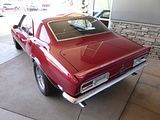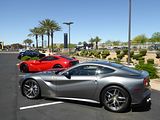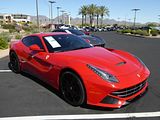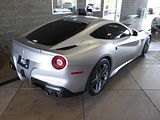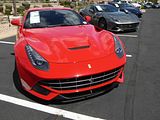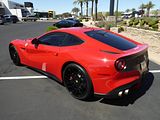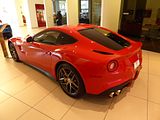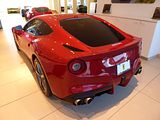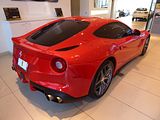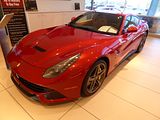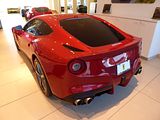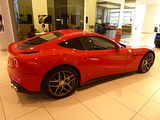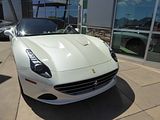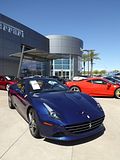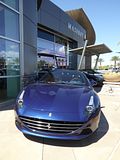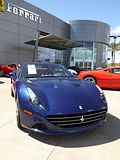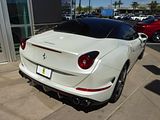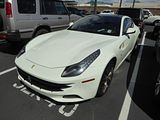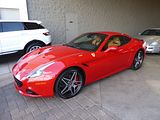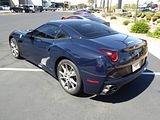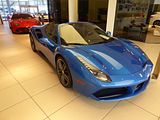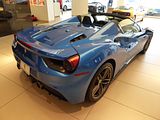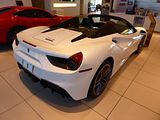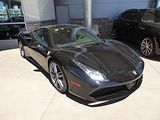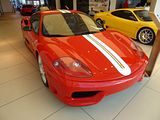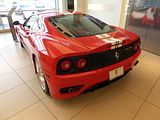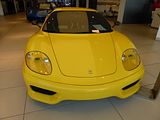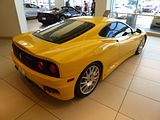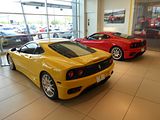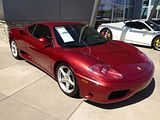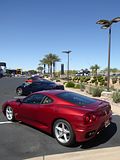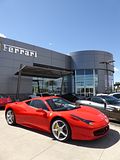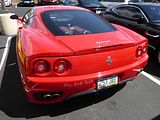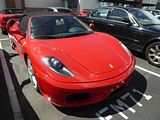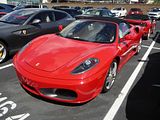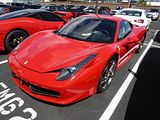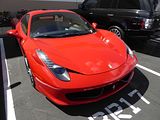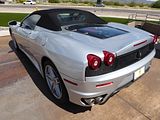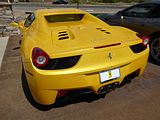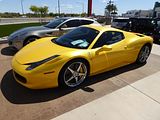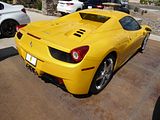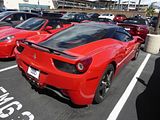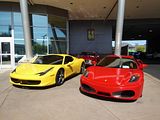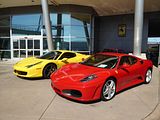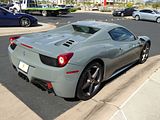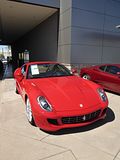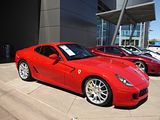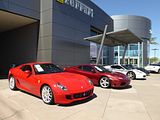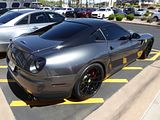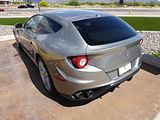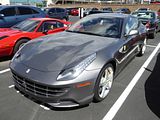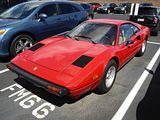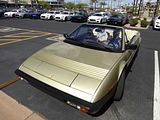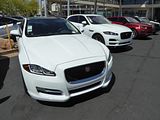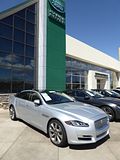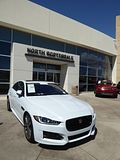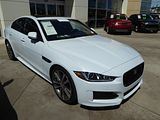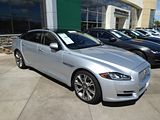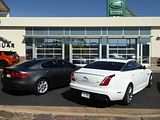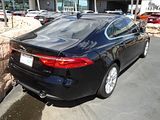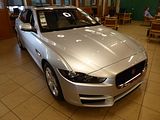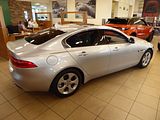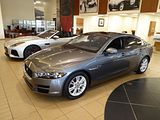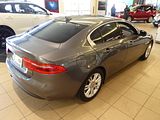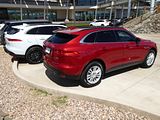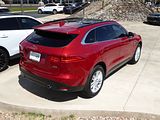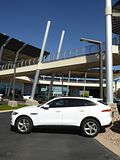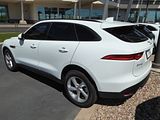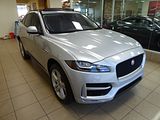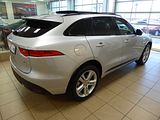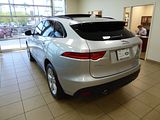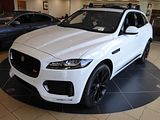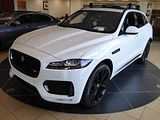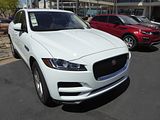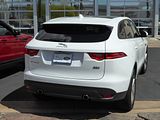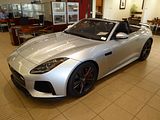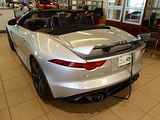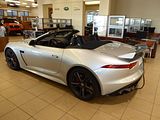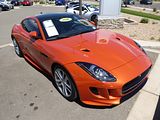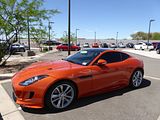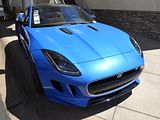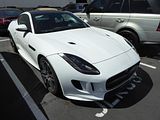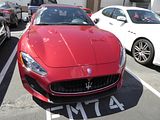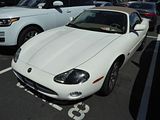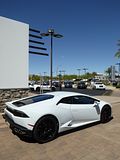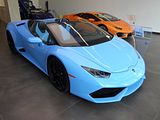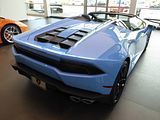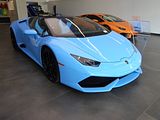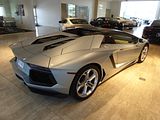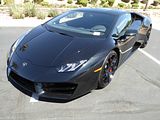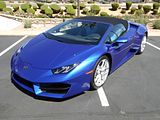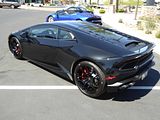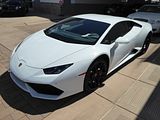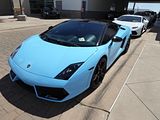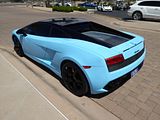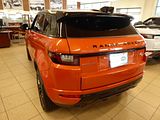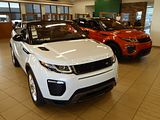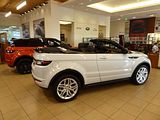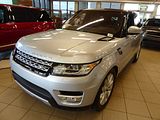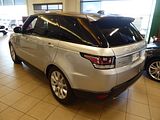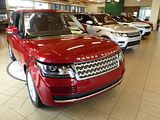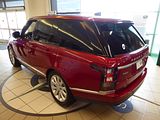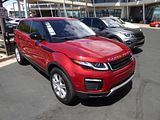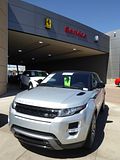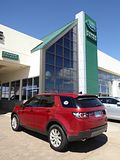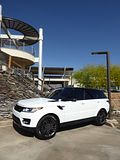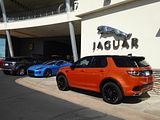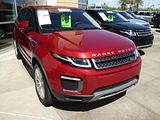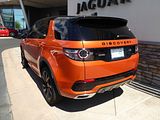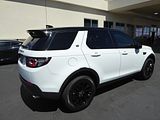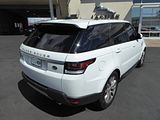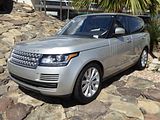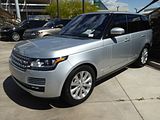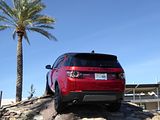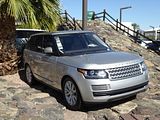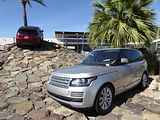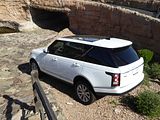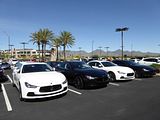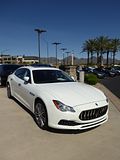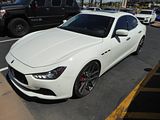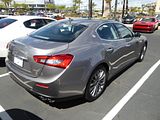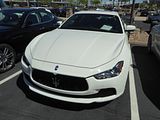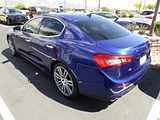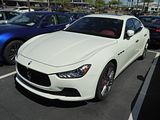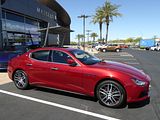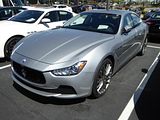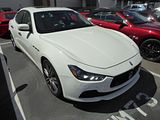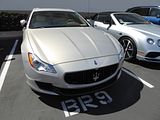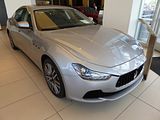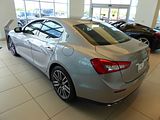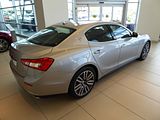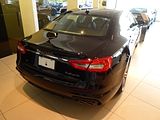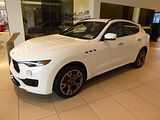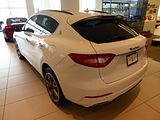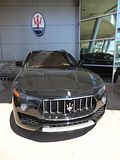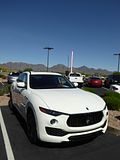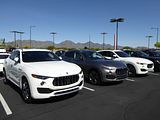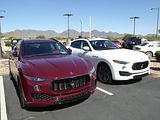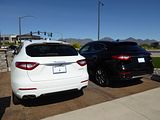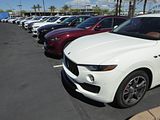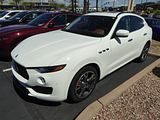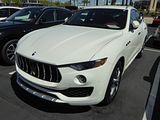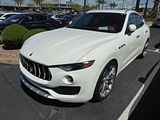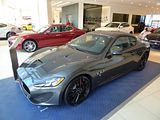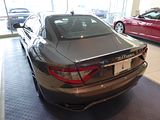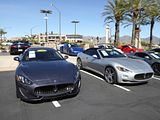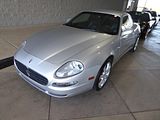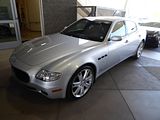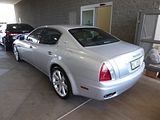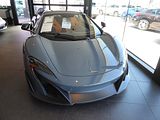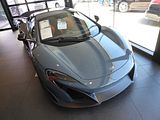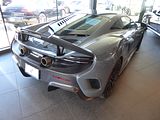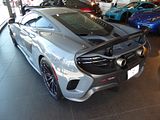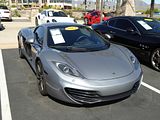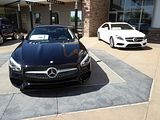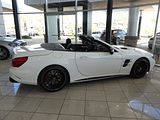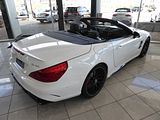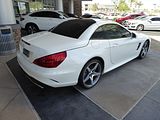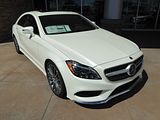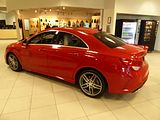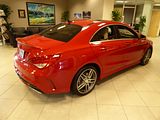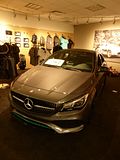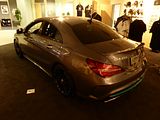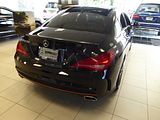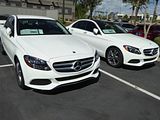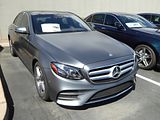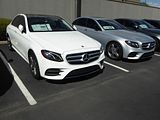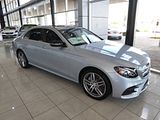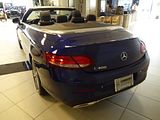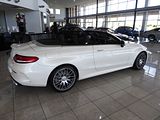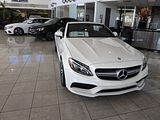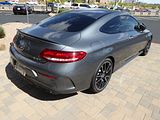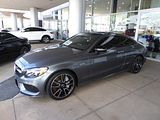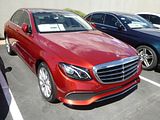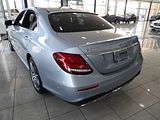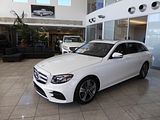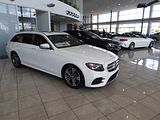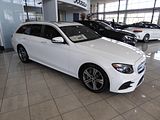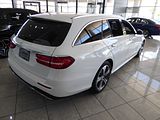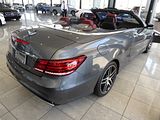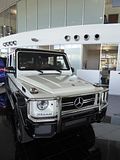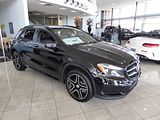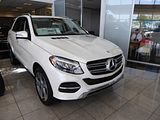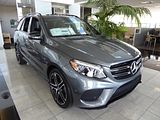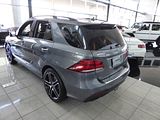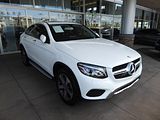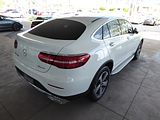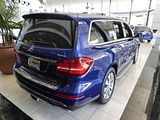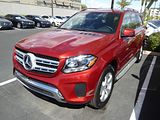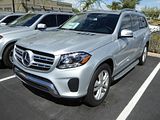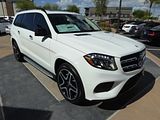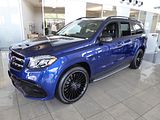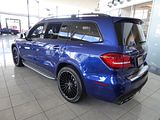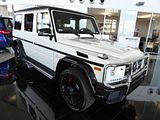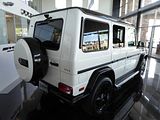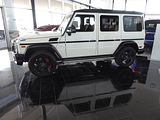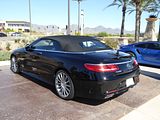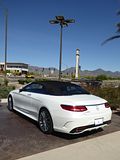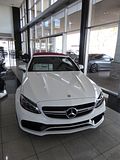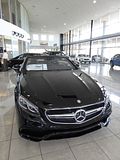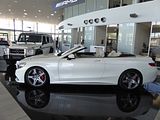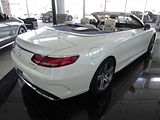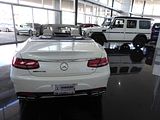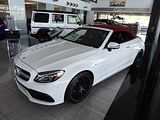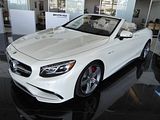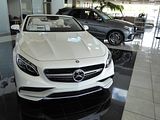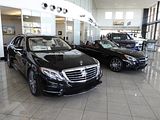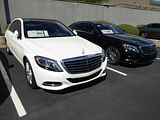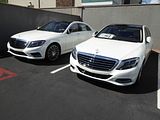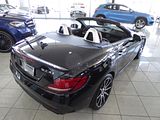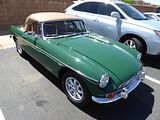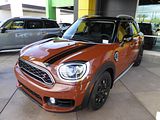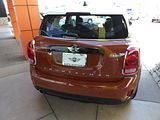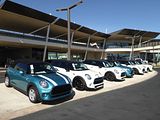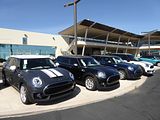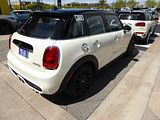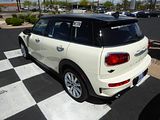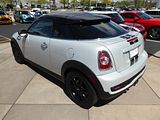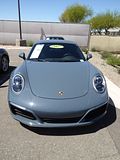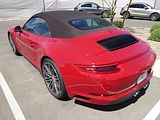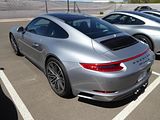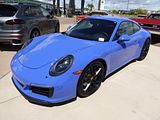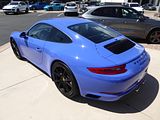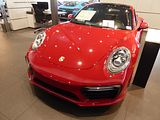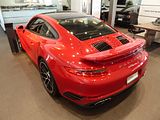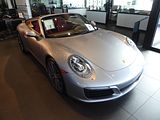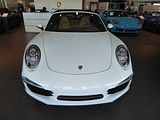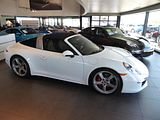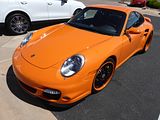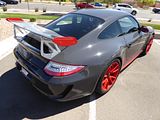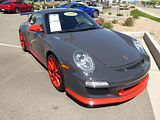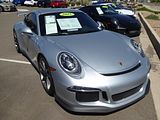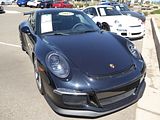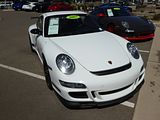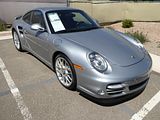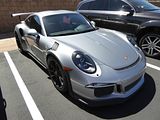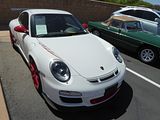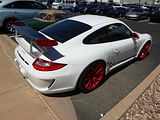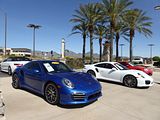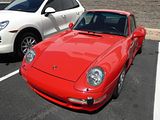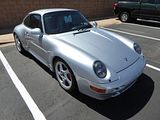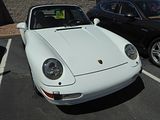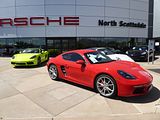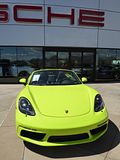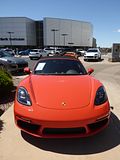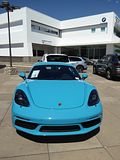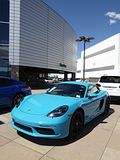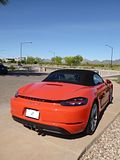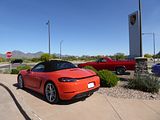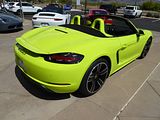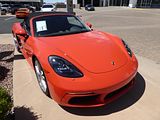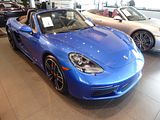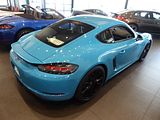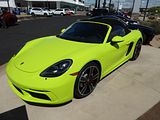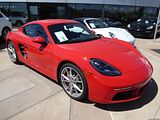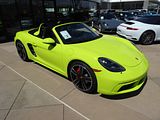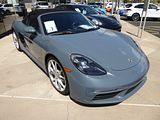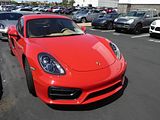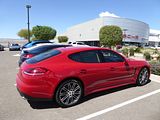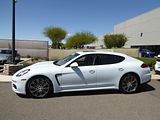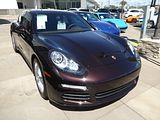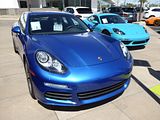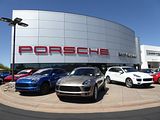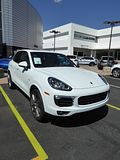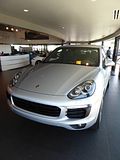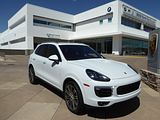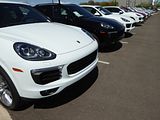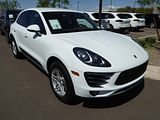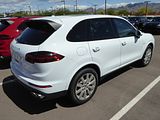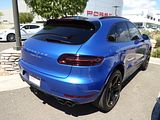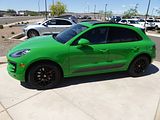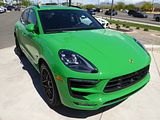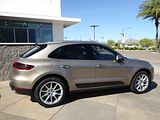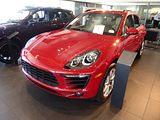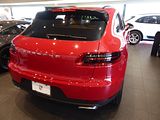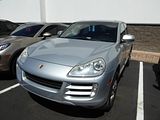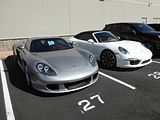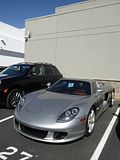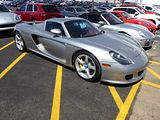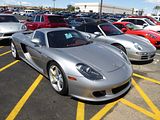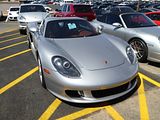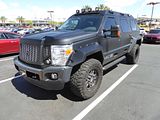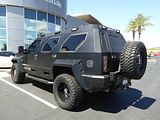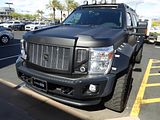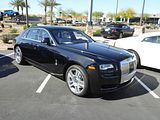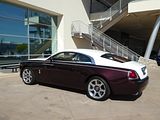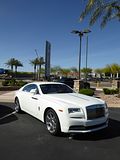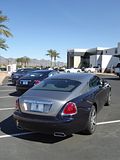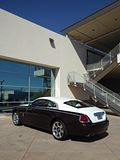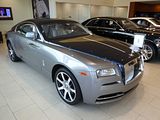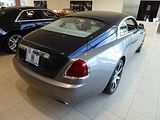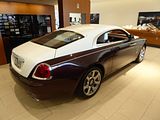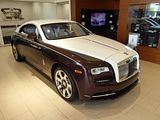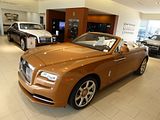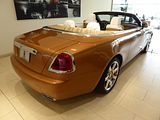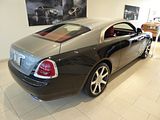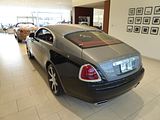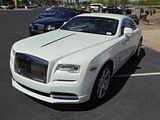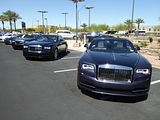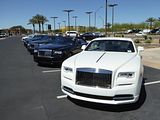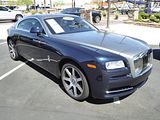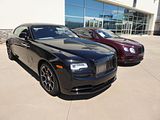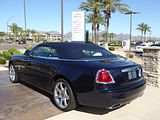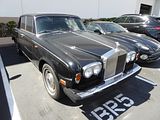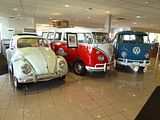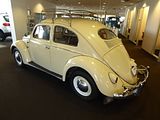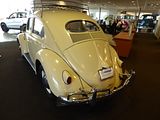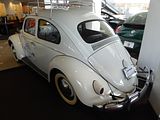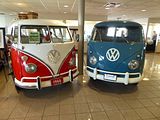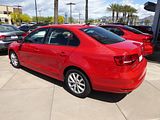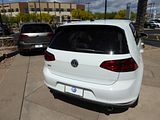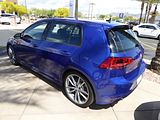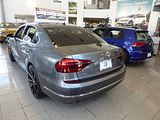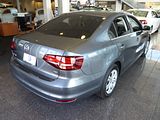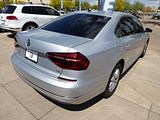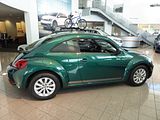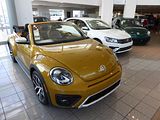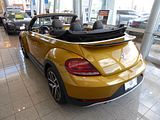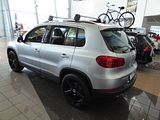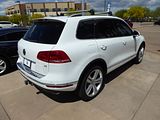I usually plan my Spring vacation around the turn of the year, when daylight hours are in short supply in the UK. And so, year after year, the attractions of an area known for almost continuous sunshine all-year around, where I know just the hotels to stay in, as the staff greet me more like a friend than a paying guest, and where there are plenty of interesting and varied rental cars available in exchange for a lot less money than you would pay in Europe, as well as there being plenty of scenic and fun roads to take them on always wins out, and with the airlines offering discounted fares in their winter sale, I book another trip to Southern California and Arizona. The second of this almost did not happen this time, as when I checked hotel availability for my chosen dates, there was literally none, anywhere in the city, something I’d never seen before, ever. Playing around with dates showed me that as long as I was out of Phoenix by the 31st March, there was actually no issue, but after that, well, it turned out that the city was hosting the Final Four, a sort of basketball equivalent of the Superbowl, and it was going to get a massive influx into the area. So a week in Arizona was still going to happen, but would be the very start of the trip rather than in the middle. I always spend the time there doing a mix of new things and places and revisiting some favourite haunts, and in that latter category comes a stop off on the Scottsdale Road, just a few blocks off the 101 freeway, to visit the Penske Showroom complex, and the rival Schumacher Mercedes dealership across the street. The area covered is vast, even when you allow for the number of brands each of which has a separate showroom and service area, as around the back of each is a huge inventory of stock, just waiting for someone to walk in and to drive home that day in their new car. The sales staff know that not everyone is going to do this, and are very happy to welcome people who just want to look at the cars. In almost every showroom someone will greet you and check if they can help, and then either leave you just to drool, or will engage in conversation about their brand, the US market and ask questions about Europe (which few of them seem to know much about!). Here, in what is almost like the sub-set of a full Motor Show, is a summary of what was on display or parked up on site at the time of this March 2017 visit.
ABARTH
Penske do not have a showroom for any of the Fiat Chrysler Automotive brands on this site, so you don’t get to see any of the new cars, but there are often second hand examples of some of the more interesting cars from the brands on site, which is why there is an Abarth to show here, as the start of this report. As this is America, technically, this is a Fiat 500 Abarth, as the cars sold in North America do not have the separate branding that they do in the rest of the world. The reason for this is that FCA went through all the expense of setting up the Fiat branding and dealer networks with only one car to sell in 2010, and felt that given the likely sales volume of Abarths, it was not financially justifiable to do the same all over again. It also has to be pointed out – much to the chagrin of American fans of the brand – that the US models are different to those sold in the rest of the world, with their own front end structure and using the Multi-Air engine rather than the T-jet that the rest of us see. This means that they only got a 160 bhp model, and they are still called 500s and not 595s. Some of the other trim differences, such as the filled in glove box, and electric window switches, have been standardised across the world.
ACURA
The Acura showroom, one of the smaller ones of the complex, is almost at the end of the site, with just Volkswagen beyond it. It is very rare that I feel sufficiently compelled or intrigued by their products to go in it, unlike all the other brands that are present. And that was the case this time too. Acura is to Honda as Lexus is to Toyota and Infiniti to Nissan, but unlike the other premium Japanese brands, they’ve even suggested trying to sell their cars in Europe. And given how Lexus and Infiniti struggle in Europe, yet are pretty popular in America, unlike Acura which has been struggling for years, it is probably a wise decision. There are Honda models related to each of the Acura offerings, but you’d never know it from looking at them. And in recent years, for most people, looking at them was the last thing they wanted to do, as there was a period with some rather challenging styling, especially with the much-despised “beak” grilles. Acura finally realised that their quest to be different was not helping matters and have toned down the details, just as Honda, and indeed Toyota and Lexus seem to have swallowed the entire bottle of wacky and divisive styling. They might have got away with if the cars had some other characteristics which propelled them to the top of class in matter such as how they drove, but they did not. And they still don’t. So there is now a range of rather unremarkable but relatively inoffensive looking vehicles, which do not sell that well. The two which do the best are, not surprisingly, the Crossover models. These are the MDX and slightly smaller RDX. Both are refreshed on a frequent basis, and the result is that I struggle to tell them apart when you only see one of them. And to think people accuse Audi of lacking differentiation between their models!
There are three saloon cars. Smallest is based on the last generation Civic and is called the ILX. Middle of the range is the TLX, a 3 Series rival. Both these cars sell in modest numbers, whilst the top of the range, the RLX, which is the latest version of a car we used to know as the Honda Legend, is in the bottom 10 of all models on sale in America on a more or less constant basis, which is where its predecessor languished as well. I don’t believe it as a bad car, it is just that there is no good reason unless you are a real marque devotee to pick one over a raft of rivals.
While looking at the cars outside the showroom, my eye was caught – and not really in a good way – by this ZDX which was parked up outside. This is a sure-fire entrant in the “well, it seemed like a good idea when we signed it off…….” category. The sales reality was frankly catastrophic, with just 7191 vehicles made over a 4 year production run. That makes it the rarest and least successful Acura ever, a title for which it faces competition from the large RLX sedan. It started off with five teaser shots, released by Acura between March 16 and 20, 2009, which indicated a coupe-like sloping roofline akin to that of the BMW X6, which led many observers to believe that would be its direct competitor. After the announcement about naming the vehicle ZDX, Acura added the words “Luxury Four-Door Sports Coupe” to the caption for each picture. Moreover, it did not state the vehicle as a crossover or an SUV. The automaker translated the designers renderings almost literally into production sheetmetal. The vehicle was the first to be completely designed at Acura’s southern California design studio in Torrance, by Michelle Christensen and was labelled a “4-door luxury sports coupe”. Acura said that it “blurs the distinction between coupe, sedan and sport utility vehicle Looking almost identical to those concept sketches, which meant that effectively a rookie designer’s were embraced by a car company and put into production with minimal changes, the production ZDX debuted at the 2009 New York International Auto Show on April 8, 2009. Although it looked a bit like the Honda Accord CrossTour, it was not mechanically related as that car was based on the front wheel drive Accord whereas this Acura sat on the underpinnings of the Honda Pilot/Acura MDX. It came with a 3,664 cc SOHC VTEC V6 all-aluminium engine rated at 300 bhp, a 6-speed automatic transmission, Super Handling All-Wheel Drive (SH-AWD), 19-inch, 7-spoke alloy wheels, panoramic glass roof with movable sunshades, hand-stitched leather interior, HandsFreeLink Bluetooth connectivity, power tailgate, and a high-powered audio system with CD player, AM/FM/XM Satellite Radio and USB audio interface with iPod integration. Sales began in winter 2009. It did not get en easy time in the early reviews, panned for being a 2 seater car with 4 doors (this was before Mercedes refined this concept with the CLA Saloon!), and although laden with technology being pretty uninspiring to drive. Sales were marginal from the outset, and they did not get better. For 2013, in a last ditch attempt, Acura reduced the range to a single trim level. and cut costs by eliminating a lot of the advanced technology features. A redesigned front grille, something that was done to all Acura models to get rid of the derided beak, did not really make much of a visual improvement and the car was discontinued at the end of the 2013 model year. Acura’s PR spin talked about them needing to sharpen their focus on their core offerings, the reality is that this was a car that should never have seen production.
To illustrate what things were like a generation back, here is the old TL, predecessor of the current TLX.
ASTON MARTIN
The Aston Martin showroom, now separated more distinctly from the Rolls-Royce area than it used to be only has space to show four or five models, but there were plenty parked up outside, which meant that all the current range were represented somewhere, as well as a number of pre-owned models. That meant that there were Rapide and the current Rapide S as well as the Vanquish and the open-topped Volante version, as well as the V8 Vantage.
I was a little surprised that there was not an example of the DB11 in the showroom, and indeed started to wonder if the car had yet arrived on US shores. It has, and there was one outside.
AUDI
Although most of the Audi bodystyles that are familiar to Europeans are offered in the US market – notable exceptions being the A1 range, the three door A3, Avant versions of the A4 and A6, and the Q2 – the versions within them sell the most strongly are quite different. The TDi versions were starting to get more popular prior to the Dieselgate debacle, though actual sales volumes remained low, largely as a result of constrained supply. It is the S models that sell in far greater quantities than they do in Europe, especially as you go up the range, and that was evident from some of the cars that were to be seen in the relatively small showroom, and parked up around the side and the back.
The A3 Saloon was conceived with the US market very much in mind, as this is a market where the hatchback has never proved all that popular. Although there were some concerns that the A3 would steal sales from the larger (and more profitable) A4, that has not really been the case, and this model has found a market space all of its own. There were lots of them on site.
There were plenty of A4 models as well, but the version which attracted my camera was the S4 version. A relative rarity in Europe, this version, the latest of a series of cars several of which I have owned over the years, is the most potent saloon version of the B9 family of cars.
Also from that family is the latest A5 Coupe, which has yet to become a familiar sight even in Europe, with the car only having been on sale a few weeks. At present, it is only the Coupe model that is available, but unlike with the first A5 series, the Sportback model is headed States-side later in the year. I am still not convinced by the new styling details, which seem rather fussier to me than the elegant first generation model cars.
Larger cars were represented by the A6, a rather nice S7 – a model which I will be testing for a weekend when I get back home, and which I am looking forward to very much – and an S8.
There were rows and rows of the Audi SUV models parked up behind the showrooms. The photos are of the Q3 and Q7, though there were plenty of the soon to be replaced Q5 here as well.
The TT was evident here, too.
Not surprisingly, the Audi attracting the most interest was the R8 that was parked up on one corner of the frontage to the showroom. I had to wait quite a few minutes before the car was devoid of people wanting a closer look and to take the inevitable selfies. The second generation somehow does not seem to have attracted quite the same level of approbation from the press or the market as was achieved by the first, but you would struggle to believe that on the evidence of this one! There was a further closed model outside and another one in the showroom.
There were examples of the previous R8 on site as well.
Dating back rather further was this 1st generation A8, a model which took over from the now largely-forgotten Audi V8. It was previiwed i September 1993, when the Audi Space Frame (ASF) Concept, in polished aluminium, was unveiled at the 1993 Frankfurt Motor Show as a D2 Typ 4D prototype. Pilot production began in December 1993 and development ended in early 1994, at a total cost of $700 million. The production Audi A8 (Typ 4D) was presented in February 1994 and debuted at the 1994 Geneva Auto Show in March, with full-scale factory production commencing in June 1994, although it was not until October 1996, for the 1997 model year that it became available in North America. Unlike its predecessor, the Audi V8 model, which was built on an existing steel platform, the A8 debuted on the then-new Volkswagen Group D2 platform, an all aluminium monocoque, marketed as the “Audi Space Frame” (ASF), which helped to reduce weight and preserve structural rigidity. The car was offered in both the A8 (standard wheelbase), and the A8 L extended or long-wheelbase (LWB) version, with an extra 5 inches of rear legroom. This luxury car was aimed directly at the Mercedes S Class and BMW 7 Series, and as such, not only was it laden with technology at launch, when it was available with either front wheel drive or the Torsen-based quattro permanent four-wheel drive, the former with a choice of 2.8 litre V6 (190 bhp) or 3.7 litre V8 (230 bhp) whilst the quattro had a 4.2 litre V8 with 295 bhp, by 1997 it also featured the first series production ESP Electronic stability control for all-wheel drive vehicles and was the world’s first production cars with both front and rear side airbags. In 1999, the A8 received side curtain airbags, new colours, and restructuring of option packages. The North American “warm weather package” added a solar sunroof which allows the interior ventilation fans to run, keeping the interior cool while the car is parked with the engine turned off. Changes to all models included a larger passenger-side mirror, and a first aid kit located in the rear centre armrest. In 1999 for the 2000 model year came a minor front-end restyle, with new, larger, clear headlights, a revised grille, and lower front valance with standard projection fog lamps. On the interior, the seats received a new, horizontal stitch pattern. Also, the 3.7-litre V8 FWD model was dropped, leaving the 2.8 V6 model and the long-wheelbase and short-wheelbase 4.2-litre quattro. These restyled cars also featured revised external door handles and an integrated radio antenna. For 2000, the North American A8 line-up was expanded to include the A8 L. In 2001, Audi introduced its new W12 engine, a compact 6.0-litre unit developed by effectively mating two VR6 engines together at the crankshaft. The engine quickly became available in the A8, though only to European and Asian customers. From its introduction through its discontinuation in 2003, only 750 of the D2 “W12” models were produced. 2001 also marked the debut of the high-performance S8 variant in North American markets. In 2002, the A8 L received standard xenon high-intensity discharge lamp (HID) headlights, and a heated steering wheel. A tyre pressure monitoring system (TPMS), an updated Symphony II stereo, and new exterior colours were also added. For 2002, all A8 variants received a boot interior release lever to facilitate escape in the event an individual became trapped within. Factory production of this generation ceased at Number 105,092 on August 4, 2002. ready for the arrival of the D3 generation model.
BENTLEY
Bentley share a showroom with Lamborghini, but some recent internal work has partitioned the two parts, so that the Italian cars are now effectively separate from the British ones. Taking pride of place in here was the Bentayga, a car which you are starting to see quite frequently on the streets of the greater Phoenix area. That’s not really a surprise, as the business case for building a Luxury SUV like this was based on estimates of likely demand in areas just like this one. Whether you like the idea, and the execution of Bentley’s first genuine “truck”, as opposed to the cars that were built in the 1920s that Ettore Bugatti rather disparagingly referred to as the “fastest lorries in the world”, the reality is that the revenue and profits that this model will generate are essential for the continued survival of the brand, just as they are for the likes of Porsche and all the other sports and luxury car manufacturers who have gone down the same path.
The showroom also contained examples of some of the rest of the range, with the Continental GT Speed and the open-topped GTC, as well as the luxurious Mulsanne.
Outside, I came across a couple of older Bentley models. The first one I found was an Arnage. A twin of the Rolls-Royce-branded sibling, the Silver Seraph, the Arnage was introduced in the Spring of 1998, the first entirely new designs for the two marques since 1980. This is a large car: over 5.4 meters (212 in) long, 1.9 metres (75 in) wide, and has a kerb weight of more than 2.5 metric tonnes. For a brief period it was the most powerful and fastest four-door saloon on the market. In a complete switch from tradition, whilst these cars had bodies built at the Crewe factory, the then owner, Vickers, decided that the car would be powered by engines built elsewhere. A number of potential engines were examined, including the GM Premium V engine, and a Mercedes-Benz V8 engine, before, in late 1994, Vickers selected a pair of BMW power plants. It was decided that the Rolls-Royce model would use BMW’s naturally aspirated V12 engine while the more-sporting Bentley model would use a special twin-turbo version of the 4.4-litre BMW V8, which was developed by Vickers subsidiary, Cosworth Engineering. On its introduction in the spring of 1998, the Arnage was available as a single model with the this 4,398cc twin turbo developing some 354 PS (349 bhp) and 420 lb·ft. During the takeover battle in 1998 between BMW and Volkswagen Group for ownership of Rolls Royce and Bentley Motors, BMW had threatened to stop supply of their engines if Volkswagen Group won. While the threat was later withdrawn in conjunction with BMW acquiring the right to manufacture the Rolls Royce marque at a new location, it was clear that Volkswagen could not accept the business and reputation risks associated with having their rival as a long-term business partner. Furthermore, customers were nervous about engine and part availability (of which there turned out to be no issue) and orders for new cars dropped precipitously. Volkswagen’s response was to prepare the old pushrod 6.75-litre 16-valve engine from the Turbo R for the Arnage, designed for the lighter and smaller BMW 32-valve V8 unit. Coupled with an outdated 4-speed automatic, the engine was extremely thirsty, and would not meet government-imposed emissions standards without hasty modifications.The revised version of the car was launched as the Arnage Red Label in October 1999. At the same time, but without the fanfare, Bentley made several minor modifications to the original BMW engined cars, and designated them as the “Arnage Green Label” for the 2000 model year. As part of the modification process, both Red and Green Label cars received stiffer body shells and larger wheels and brakes. The stiffer body shell was needed because of the extra weight of the British engine. The larger brakes were needed for the same reason. Despite the larger brakes, braking performance worsened with the extra weight of the 6.75 engine. The braking performance of the ’99 Green Label from 70–0 was 172 feet while the later Arnage T’s performance was 182 feet from the same speed. The PR department at Bentley pointed to customer demand as the driving force behind the reversion to the old two valve per cylinder 6.75-litre unit for the Red Label. This explanation appears to have been acceptable to all but a few of the motoring press who welcomed the return of the old unit after criticising the BMW motor as at best insipid and, at worst, underpowered. In reality, the outgoing BMW-powered Arnage was technically more modern, considerably more fuel efficient, and had 32 valves with double overhead camshafts, twin-turbo and Bosch engine management technology – as opposed to 16-valve, single turbo and a pushrod motor with less advanced engine management. The Red Label’s increase in motive power shaved less than a second of the zero to 60 mph time. However, the BMW twin turbo unit remained noticeably more agile and responsive from a driver’s perspective, due to its more responsive DOHC engine, better weight balance(maintaining a 51.1/48.9 weight distribution) and almost 600 lb (270 kg) lower curb weight. Ultimately the Green Label was more reliable and significantly less expensive to service in the long term. The key limiting factor of the BMW engine’s output was the ZF 5HP30 transmission which was not rated to handle more than the 413 lb·ft torque that the twin turbo engine was tuned to produce. In total only seven Arnage Green Label units were built, all of which were left-hand-drive versions. There was a final series of vehicles built in 2000 with the 4.4-litre BMW engine designated the Arnage Birkin, of which 52 units were produced and are distinguishable by their three-dial as opposed to five-dial instrument centre dashboard configuration. A long-wheelbase version of the Red Label was launched at the North American International Auto Show in 2001. The Green Label ended production in 2000. The Red Label models were replaced in 2002. In 2001, the Arnage RL, a long-wheelbase model, 9.8 in longer than the Arnage, was launched, the extra length added to the car at its rear doors and its C-pillar. With the standard Arnage model, the rear wheel wells butt up against the rear door frames, but with the RL they are a few inches further back. The overall effect is a larger rear area inside the car. Available only as a bespoke “Mulliner” model, each RL was customised to the desires of the buyer. The RL, however, was also the first of a new series of Arnages which would finally cure the Bentley Arnage of the reliability and performance deficiencies experienced following its forced deprivation of the modern BMW engines it was designed to use. The RL would also present a credible challenge to BMW’s attempts to revive the Rolls-Royce brand with its planned new model, the Phantom. The RL’s introduction saw the introduction of an entirely reworked version of the 6.75-litre V8 engine. Where the engine used in the Red Label was a quickly and less-than-completely-satisfactorily modified version of the Turbo RT’s unit, the RL featured an entirely reworked version of the old 6.75-litre V8. More than half of the engine’s parts were completely new, with Bosch Motronic ME7.1.1 engine management replacing the old Zytek system, and two small Garrett T3 turbochargers replacing the single large T4. This new engine developed 405 PS (399 bhp) and 616 lb·ft, and was said to be capable of meeting all future emissions requirements. Finally, the Arnage was powered by a modern twin-turbo unit with state-of-the-art electronic management system similar to the originally Cosworth-BMW unit developed for the Arnage in 1998. Perhaps ironically, what was essentially a new engine developed by Volkswagen Group engineers for the RL in 2001, was now producing the same sort of power as the original BMW V8 4.4 engine used in the first Arnage in 1998. Unfortunately, the development and testing of the revisions to the new engine were rushed by VW to meet regulatory requirements. As a result, the camshafts are prone to failure requiring extensive repair work to remedy In 2002, Bentley updated the Red Label as the series two Arnage R. This model was launched to contrast the Arnage T, which was developed to be more sporting. The Arnage R features two Garrett T3 turbochargers, as with the RL.The Arnage T, also from 2002, was claimed to be the most powerful roadgoing Bentley at its launch at the Detroit Motor Show. As with the Arnage R, there were twin-turbochargers, but tuned to develop 465 PS (459 bhp) and 645 lbf·ft. The Arnage T’s 0–60 mph time is 5.5 seconds; a top speed of 170 mph was claimed. The Arnage range was facelifted in 2005, with a front end resembling that of the new Continental GT. Production of the Arnage ceased in 2009.
There was also an Azure here This model debuted in March 1995 at the Geneva Motor Show on the platform of the Continental R model, which had been originally launched in 1991. Production only crept to a start, with a mere nine examples finished in the first year – in 1996, after full production had started, no fewer than 251 Azures were finished. Pininfarina assisted in the two-year process of turning the Continental R into a full four-seater convertible, and also built the shell and soft-top at their factory in Italy, largely from parts sourced in the UK. Final assembly was then carried out at Crewe. A roll-bar was never considered, which necessitated extensive reinforcing of the chassis. At 210 inches in length and 5,750 pounds in weight, the Azure often surprised onlookers with its size and bulk, intended to both convey a sense of “presence” and allow for comfortable seating of four adult passengers. Power came from the company’s stalwart 6.75-litre V8, featuring a single, intercooled Garrett turbocharger and producing in the region of 360 hp – Rolls-Royce and Bentley did not give official power numbers at the time of the Azure’s introduction. By the time production began in earnest, new engine management from Zytek meant a slight power increase to 385 hp at 4,000 rpm and 553 lb·ft of torque at 2,000 rpm; power was routed to the rear wheels via a modified, General Motors sourced, four-speed automatic transmission. With a 0 – 60 time of 6.3 seconds and a top speed of 150 mph, the Azure was very fast for a car of its size, weight and poor aerodynamic profile. Owing to the limited space and workforce at Bentley’s Crewe factory, the Azure’s thick, powered convertible top was designed and manufactured by Pininfarina, which significantly added to the vehicle’s cost, which was significantly greater than the Continental R on which it was based. From 1999 through the end of production, the Azure was also available in “Mulliner” trim, which added special bespoke trim and additional equipment and allowed the buyer the option for further customisation during the build-process; pricing varied by car, as equipment could be significantly different from one to the next depending on customer requests.
BMW
When I was last here in September 2016, the regular BMW showroom was closed off, for “re-modelling”, with a temporary facility across a side street from the main complex. The work is now complete, so I could have a look at the new display area. It is certainly an improvement, with enough space for the double line of cars to be parked up end to end, to cover most of the US range with at least one representative, in parallel with a very large number of sales desks, without any of it feeling crammed in. A receptionist greeted me as I entered and then a sales advisor came over for a quick chat and brought me a welcome bottle of water (it was a very hot day, for the time of year). I was standing by the new G20 5 Series at the time, so the conversation was about that car. There were a few of them in the showroom, and they had only been on site a few days, the model just having had its US launch. This was only a matter of days after the car had reached the UK, which is very quick, as it can easily take months after a European launch before the US markets gets new versions. The US won’t be getting the Touring version of this 5, just like they did not get the old one. The salesman said that he is not personally convinced that this is the right call, as he notes that Mercedes do quite nicely selling E Class Wagons, effectively with no competition. The party line is that there is the 5 GT for those who want a more versatile car. The problem, of course, is that not that many people want the ungainly 5 GT! I had a good sit in the new 5, and I can report that it is, well, very BMW-like. It’s nicely finished, as you would expect, and has a lot of buttons as you would expect. The real test will be to drive one. The UK press have put it at the top of the class, beating even the Jaguar XF, which suggests it could be very very good indeed.
There were examples of the rest of the range in here, too: 3 Series Saloon., a 4 Series GranCoupe, the 640i Convertible and GranCoupe as well as the range topping 7 Series, and from the SUV range, the X3 and X5.
A separate display contained one of the i3 electric cars, and there were lots of these parked up outside.
Occupying pride of place at the other end of the showroom from the one I had entered was an M4 GTS. I was a bit surprised to see this, as I was under the impression that the very limited number of cars that had been made all had buyers, but the sales man told me that no, this is technically for sale, if someone offered enough money – around $150,000 is what they are looking for. They are in no hurry to sell it, though, having ordered it speculatively, knowing someone would be bound to want it. BMW introduced the M4 GTS concept in August 2015 at the Pebble Beach Concours d’Elegance, and then in 2016, released this “production” track-focused version of the standard M4 coupe, limited to 700 units with a US price tag of $133,205 (and about the same in £ sterling!0 It is powered by the same 3.0-litre twin-turbo straight-six engine as in the normal M4, but the power has been raised to 500 PS (493 bhp), largely due to a novel water injection system that is the first to be used on a production car in almost twenty years. In addition to the increased engine power, the M4 GTS is 27 kg (60 lb) lighter than the standard M4 Coupé with the DCT transmission, so the weight now stands at 1,585 kg (3,494 lb). The 0 to 100 km/h (62 mph) is reduced to just 3.8 seconds, while the top speed is 305 km/h (190 mph). The M4 GTS has, according to BMW, lapped the Nürburgring Nordschleife in 7min 28sec, 24 seconds faster than the base M4, 20 seconds faster than the M3 GTS and the same time as a Porsche Carrera GT.
In the context of the M4 GTS, then the other M cars on site seemed almost affordable and perhaps a bit, well, tame! There was an example of the soon to be superceded M5 outside the front of the showroom, and I came across this X6M in the huge parking area around the back.
There were some older BMW models that I found in the large parking area out the back. These included Coupe and Convertible versions of the E46 generation M3. The E46 M3, first introduced in October 2000, appeared worldwide with the new 3.2 litre S54 M-tuned engine, generating 343 bhp. It was only available in coupe and convertible bodies as the saloon version had been dropped. The E46 M3 was offered with a standard 6-speed Getrag transmission, but optionally came with a SMG drivelogic transmission (also known as the SMG II). This is the standard 6-speed Getrag transmission with an electrohydraulically actuated clutch (no clutch pedal). Shifts are made via the SMG gear knob or the steering wheel mounted paddle shifters. The engine had a redline of 8,000 rpm. As with most M engines, the S54 again had 6 independent throttle bodies and this time electronically operated throttles (drive-by-wire throttle with no cable). In the U.S., the E46 M3 came with similar engine output as the European version, unlike in the E36, whose engine was derived from the M50/52 series engine. Power was now at 333 bhp due to close-coupled catalytic converters closer to the engine exhaust ports. In 2009, Road and Track magazine announced the 2006 M3 with the SMG transmission as its favourite sports car of all time. The car was popular, with 85,744 examples being built before production ceased in 2006.
There was also an E31 850i, a car which found less favour than everyone expected when it was new. While it did supplant the original E24 based 6 Series in 1991, a common misconception is that the 8 Series was developed as a successor. It was actually an entirely new class aimed at a different market, however, with a substantially higher price and better performance than the 6 series. Design of the 8 Series began in 1984, with the final design phase and production development starting in 1986. The 8 Series debuted at the Frankfurt Motor Show (IAA) in early September 1989. The 8 Series was designed to move beyond the market of the original 6 Series. The 8 Series had substantially improved performance, however, as well as a far higher purchase price. Over 1.5 billion Deutsche Mark was spent on total development. BMW used CAD tools, still unusual at the time, to design the car’s all-new body. Combined with wind tunnel testing, the resulting car had a drag coefficient of 0.29, a major improvement from the previous BMW M6/635CSi’s 0.39. The 8 Series supercar offered the first V-12 engine mated to a 6-speed manual gearbox on a road car. It was the first car to feature CAN bus—a form of multiplex wiring for cars that is now an industry standard. It was also one of the first vehicles to be fitted with an electronic drive-by-wire throttle. The 8 Series was one of BMW’s first cars, together with the Z1, to use a multi-link rear axle. While CAD modelling allowed the car’s unibody to be 8 lb (3 kg) lighter than that of its predecessor, the car was significantly heavier when completed due to the large engine and added luxury items—a source of criticism from those who wanted BMW to concentrate on the driving experience. Some of the car’s weight may have been due to its pillarless “hardtop” body style, which lacked a “B” post. Sales of the 8 Series were affected by the global recession of the early 1990s, the Persian Gulf War, and energy price spikes. As a result, plans for the M8 supercar were dropped in 1991. A cheaper 8 cylinder 840CI joined the range in 1993 in an effort to boost sales, and to an extent it, did but this was still not enough and BMW pulled the 8 Series from the North American market in 1997, having sold only 7,232 cars over seven years. BMW continued production for Europe until 1999. The ultimate worldwide production total was 31,062.
There was also a rather nice Z8. Originally presented as a concept, the Z07, a styling exercise intended to evoke and celebrate the 1956-’59 BMW 507 and to celebrate the millennium change, the car was a sensation at the ’97 Tokyo Auto Show and its overwhelming popularity spurred BMW’s decision to produce a limited production model. Fortunately, the Z07 had been designed with production in mind. As a result, practical and regulatory considerations necessitated very few changes for the production model. Nevertheless, the windscreen of the Z8 was extended upward, and a larger front airdam was fitted. Both changes were implemented to provide aerodynamic stability and a reasonably placid cockpit environment. The four-spoke steering wheel of the concept car was replaced by a three spoke design. The hardtop was changed from a double-bubble form with a tapering faring to a single dome with a truncated convex backside. The concept’s exotic driver’s side helmet fairing was eliminated to allow easy operation of the power soft top. Despite these changes, the Z8 remained extremely faithful to the concept car. The side-mounted indicators were integrated into the side vents in a fashion that rendered them invisible until activated. The vintage simplicity of the interior was preserved by hiding the modern equipment under retracting panels. Complex compound curves were preserved through the use of an expensive MIG-welded aluminium space frame. The Z8 even retained the concept’s five-spoke wheel design, albeit without the race-style centre lug nut. The Z8’s spaceframe was produced in the Dingolfing Plant and the car hand-finished in Munich. It had an all-aluminium chassis and body and used a 4941 cc 32-valve V8, that developed 400 hp and 370 lb·ft (500 N·m) torque. This engine, known internally as the S62, was built by the BMW Motorsport subsidiary and was shared with the E39 M5. The engine was located behind the front axle in order to provide the car with 50/50 weight distribution. The factory claimed a 0–100 km/h (0–62 mph) time of 4.7 seconds; Although it could outperform a Ferrari 360 Modena in several respects, as with most BMW products, its top speed was electronically limited to 155 mph (250 km/h). The Z8 used neon exterior lighting, the tail lights and indicators are powered by neon tubes that offer quicker activation than standard lightbulbs and expected to last for the life of the vehicle. The Z8’s head and tail lights were done by Vipin Madhani. Every Z8 was shipped with a colour-matching metal hardtop. Unlike many accessory hardtops, which are provided for practical rather than stylistic considerations, the Z8 hardtop was designed from the outset to complement the lines of the roadster. In order to promote the Z8 to collectors and reinforce media speculation about the Z8’s “instant classic” potential, BMW promised that a 50-year stockpile of spare parts would be maintained in order to support the Z8 fleet. Due to the limited volume of Z8 production, all elements of the car were constructed or finished by hand, thereby compounding the importance of ongoing manufacturer support for the type. The price point and production process allowed BMW to offer custom options to interested buyers. A significant number of Z8s with non-standard paint and interior treatments were produced over the course of the four-year production run by BMW Individual. 5,703 Z8s were built.
CHEVROLET
There are no GM showrooms on the site here, but there were a couple of classic Chevy models on show, for sale. First of these was this rather nice El Camino SS. The El Camino was a coupé utility/pickup vehicle produced between 1959–60 and then again from 1964–1987. It was conceived as a response to the success of the Ford Ranchero pickup, though its first run lasted only two years. Production resumed for the 1964–1977 model years based on the Chevelle platform, and continued for the 1978–1987 model years based on the GM G-body platform. Although based on corresponding Chevrolet car lines, the vehicle is classified and titled in North America as a truck. The model seen here is example of the third generation which was introduced in 1968. Based on the Chevelle station wagon/four-door sedan, it was longer than the previous model, with a wheelbase of 116 in and an overall length of 208 in. It shared Chevelle Malibu exterior and interior trims. The interior was revamped including cloth and vinyl or all-vinyl bench seats and deep twist carpeting. All-vinyl Strato bucket seats and centre console were an $111 option. Power front disc brakes and Positraction were optional. A new, high-performance Super Sport SS396 version was launched. The Turbo-Jet 396 had 325 bhp or 350 bhp versions. Returning to the official options list for the first time since late 1966 was the 375 bhp L78. It had solid lifters, big-port heads, and an 800 cfm Holley four-barrel on a low-rise aluminium manifold. A three-speed manual was standard with all engines, and a four-speed or automatic was optional. In 1968, the SS was a separate model (the “SS-396”). The 1969 models showed only minor changes, led by more-rounded front-end styling. A single chrome bar connected quad headlights, and a slotted bumper held the parking lights. New round instrument pods replaced the former linear layout. For the first time, the Chevrolet 350 V8 was used in an El Camino. The Super Sport group included a 265- or 325-bhp 396-cubic-inch V8 beneath a double-domed bonnet, along with a black-out grille displaying an SS emblem. More potent editions of the 396 engine, developing 350 or 375 bhp also made the options list. Options included power windows and locks. Curiously, back-up lights moved from the rear bumper to the tailgate, where they were ineffective when the gate was down. The 1970 models received sheet metal revisions that gave the bodies a more squared-up stance, and interiors were also redesigned. The new SS396, which actually displaced 402 cu in (6.6 litres) (although all emblems read 396) was available. Chevrolet’s largest and most-powerful engine of the time was also put into a select few El Caminos. The LS6 454 CID engine, rated at 450 hp and 500 lb⋅ft of torque, gave the El Camino 1/4-mile times in the lower 13-second range at around 108 mph (174 km/h). The 1971 El Camino got fresh front-end styling that included large Power-Beam single-unit headlights, a reworked grille and bumper, and integral park/signal/marker lights. For 1971, mandated lower-octane unleaded fuel necessitated a reduction in engine compression, and GM’s A.I.R. system, a “smog pump”, was added to control tailpipe emissions. Power and performance were reduced. Engine offerings for 1971 included the 250-6, small-block V8s of 307 and 350 cubic inches; and big block V8s of 402 and 454-cubic-inch displacements. Horsepower ratings of those engines for 1971 ranged from 145 for the six to 365 for the RPO LS5 454 – all in gross figures. The LS6 454 V8 was gone forever. A rebadged El Camino, the GMC Sprint debuted in 1971. It shared the same engine and transmission offerings as its Chevrolet counterpart. The 1972 El Caminos wore single-unit parking and side marker lights on their front fenders, outside of a revised twin-bar grille, but little changed. For 1972, horsepower measurements were switched to the “net” figures as installed in a vehicle with all accessories and emission controls hooked up. Engine offerings included the 110 bhp 250-6, a 307 V8, a 175 bhp 350-cubic-inch V8, and big block V8s of 402 and 454 cubic-inch displacements. The 402-cubic-inch (still known as a 396) produced 240 bhp; the 454 managed to put out 270 bhp under the net rating system. Super Sport equipment could now be ordered with any V8 engine, including the base 307-cubic-inch version. All 1972 El Caminos with the 454 ci engine have a “W” as the fifth digit in the VIN, and the 454 was only available with Super Sport trim. A new model appeared for the 1973 model year. These days, the SS models like this are among the most desirable of them all.
Perhaps more familiar, and equally collectible these days is this early Camaro SS. Concerned with the runaway success of the Ford Mustang, launched in April 1964, Chevrolet executives realised that their compact sporty car, the Corvair, would not be able to generate the sales volume of the Mustang due to its rear-engine design, as well as declining sales, partly due to the negative publicity from Ralph Nader’s book, Unsafe at Any Speed, GM realised that a new car was needed. It took until September 1966 to get their rival to market. At launch. the Camaro was touted as having the same conventional rear-drive, front-engine configuration as the Mustang and Chevy II Nova. In addition, the Camaro was designed to fit a variety of power plants in the engine bay. The car sat on a new rear-wheel drive GM F-body platform was available as a two-door coupé or convertible with 2+2 seating, and a choice of 230 cu in (3.8 litre), 250 cu in (4.1 litre) inline-6 or 302 cu in (4.9 litre), 307 cu in (5.0 litre), 327 cu in (5.4 litre), 350 cu in (5.7 litre), 396 cu in (6.5 litre), 427 cu in (7.0 litre) V8 powerplants. The first-generation offered a standard, Super Sport, and Rally Sport editions. In 1967, the Z/28 model was added featuring stripes on the bonnet and boot, styled rally road wheels, and a 302 cu in (4.9 litre) V8 engine. The first-generation Camaro lasted until the 1969 model year and eventually inspired the design of the new retro fifth-generation Camaro.
DODGE
Another car from the FCA Group that seemed so “right” here was this fourth generation “Viper”, more properly called an SRT than a Dodge. The fourth, and what seems likely to be final, generation premiered at the 2012 New York Show. It followed the same format as the three previous iterations, with a huge 8.4 litre engine crammed under the low-slung bonnet. There’s nothing particularly sophisticated about this car, which is largely about brute power, and noise. It seems that the market for such cars is small and diminishing and it has been announced that production will cease during 2017.
FERRARI
Lovers of Ferrari would enjoy a trip here, as there are always plenty of the marque to be seen, with a mix of new and used cars on site. There were a couple of the current top of the range F12 Berlinetta parked up outside, and more of them in the showroom.
The 8 cylinder cars were well represented too, with the 488 GTB and Spider joined by the California T, again both parked up outside and in the showroom.
There were lots of Ferrari models from the back catalogue here. Some were in for servicing, not all of them with local Arizona plates on them, event, whilst others were available for sale. Two of the 360 Challenge Stradale cars were parked up in the showroom. This was a low production track day focused car based on the 360 Modena. From a handling and braking performance perspective was the equivalent of adding a FHP (Fiorano Handling Pack) to the 360, which was available for V12 models such as the 550, 575 or F599 but never separately for the V8’s. It was inspired by the 360 Modena Challenge racing car series so the focus was primarily on improving its track lapping performance credentials by concentrating on handling, braking and weight reduction characteristics, which are essential in pure racing cars. Ferrari engineers designed the car from the outset with a goal of 20% track day use in mind and 80% road use. With only a small 20 bhp improvement in engine power from the Modena (and boasting an improved power-to-weight ratio) the Challenge Stradale accelerates from 0 to 100 km/h (62 mph) in 4.1 seconds according to Ferrari, four tenths faster than a Modena, but bald figures do not paint the full picture. For the enthusiastic driver the differences are truly staggering; genuine systematic improvements were achieved to the setup and feel of the whole car. Throttle response from the digital throttle was ratcheted up and feedback through the steering wheel was enhanced. The responsiveness of the controls, the balance of the chassis, the braking performance and the driver feedback all contribute greatly to the overall driving experience. Thanks to CCM brakes borrowed from the Enzo, some lower weight parts and a FHP handling pack, the Challenge Stradale was able to claim an impressive 3.5 seconds improvement per lap of its Fiorano circuit compared to the Modena (the target was 2.5 seconds). In total, the Challenge Stradale is up to 110 kg (243 lb) lighter than the standard Modena if all the lightweight options are specified such as deleted radio, lexan (plexiglass) door window and Alcantara fabric (instead of the leather option). As much as 74 kilograms (207 lb) was taken off on the car by lightening the bumpers, stripping the interior of its sound deadening and carbon mirrors and making the optional Modena carbon seats standard. Resin Transfer Moulding was utilized for the bumpers and skirts, a carry over from the Challenge cars which resulted in lighter bumpers than on the Modena. The engine and transmission weight was slimmed down 11 kg (24 lb) through the use of a smaller, lighter weight sports (yet still stainless steel) exhaust back box and valved exit pipes. The Challenge Stradale also got Brembo carbon ceramic brakes as standard (which later became standard fitment on the F430) which shaved 16 kg off the curb weight and improved handling by reducing unsprung weight and completely eliminating brake fade. Cars fitted with the centre console stereo option, sub speaker box behind the seats and glass side windows re-gained approximately 30 kg over the best selected options (from a weight perspective). Challenge Stradale models are much sought after these days, and when they do come up for sale, they command a huge premium over the regular 360 Modena cars.
The regular 360 Modena was here as well, along with its successor, the F430, which was to be seen in both the Coupe and Spider bodystyles, and so was its successor, the 458 Italia and Spider.
I was not entirely convinced by this one, a 458 Italia which had been extensively modified. Plenty of companies offer “upgrades” like this. I am guessing from the logo on the front, that this one, which sported modifications designed to make it resemble the LaFerrari, was done by PRIOR Design. According to their website, PRIOR Design North America, a Miami, FL, based company “specialises in the distribution and installation of exclusive aerodynamics, exclusive alloy wheels, custom bespoke interiors, high-quality exhaust systems and performance upgrades. Our company is known for its broad range of products & vehicle modifications that meet the highest quality standards. Our core business is to deliver exclusively designed aerodynamic parts & forged wheels. We offer tailor-made products & modifications for the top marques in luxury and exotic vehicles.”
From the back catalogue of V12 cars were the FF and the rather splendid 599GTB.
Dating back rather further were this duo: a 308 GTBi, which was parked up and a Mondial Convertible which was clearly just visiting.
JAGUAR
The busiest of all the showrooms was the one with Jaguar Land Rover products in it, which was heartening to see. There is, of course, a lot of fresh product that the company has to offer, and it would seem that despite the rather patchy reliability reputation that bedevilled the brands for years, people are prepared to take another look. As well as the quintet of cars in the showroom, there were lots parked up outside. Saloon models were represented by the XE, XF and XJ. I am not totally convinced that the bright blue paintwork on the large XJ is entirely the best choice, but these cars all look good.
Now on sale in America is the F-Pace, and this is likely to become the range’s best seller. There were several of these parked up around the back of the showroom as well as one that was unlocked and open for view inside.
The F Type is very much the halo model in the range now, sold in Coupe and Convertible guises and both of these were here.
Parked up in the service area was this XK8 Cabrio.
LAMBORGHINI
There’s now a completely separate area for Lamborghini in the building that they share with Bentley, with space for three or four cars to be presented. On show were the Huracan in Coupe and recently revealed Spyder guise whilst the Aventador was actually in the back of the Aston Martin display area. There were several more Huracan models to be seen outside.
This Gallardo was to be seen outside.
LAND ROVER
The larger part of the JLR showroom contained the Land- and Range-Rover products. With the range expanding to cover numerous different models, there’s only really space for one example of each model, and that is what we got, with Evoque, including the Cabrio version, Discovery Sport and the high-end Range Rover and Range-Rover Sport all on show.
There are lots of more models on display around the back. There is a special off-road-esque area out here, too, and several of the cars are parked at some rather improbable-looking angles, to make the point that although many owners will barely get beyond a grassy car park, the cars are capable of tackling far rougher stuff.
MASERATI
When I was here in September 2016, there were few Maserati cars parked up outside, which was the first I had ever seen anything other than long lines of Ghibli and Quattroporte cars outside the showroom, resplendent in almost every available colour from the range on offer. They were back this time, with lots of examples of both here, to provide interested parties with the chance to see several of the optional features such as colour, wheel, interior trims first hand.
With the Levante now established, and selling strongly it was no surprise to find that there were also a number of these on display outside, as well as couple of cars in the showroom.
By comparison, the GranTurismo and GranCabrio sell in tiny numbers these days, but they are still part of the range, and so both were represented.
Older models that I came across included a 4200 GT and one of the very elegant fifth generation Quattroporte saloons.
McLAREN
This 675LT had pride of place in the Porsche showroom, in a spot where there is nearly always something that bit special on show. And the 675LT certainly is that. Commanding a significant price premium over the regular 650S cars, the 675LT sits in the “Super” part of the range (P1s are in the “Ultimate” collection). Those who thought that the 675LT might look little different from the “regular” 650S, with a simple elongation of the rear end underestimated the engineers at Woking, as the 675LT has a style and appearance all of its own, with lots of different detailing to distinguish it from the standard car, with carbon fibre wings and twin circular titanium exhaust pipes exposed at the rear deck to improve cooling, sitting above a new bumper and diffuser both made from carbon fibre. At the front there is a larger carbon fibre splitter and new front bumper design, aimed at improving cooling and downforce. Designed to be far more track focused than the 650S, it contains many elements aimed at improving handling and performance. The biggest difference to the way it feels is apparently down to 100kg reduction in weight, but it does also contain a significantly modified 666 bhp version of the 650S’ twin turbo 3.8 litre V8. 50% of engine parts are new, including the turbos, camshafts and connecting rods, along with detailed revisions to the cylinder heads and manifolds. As a consequence, the 0-60 time is reduced to 2.9 seconds, 0.1 seconds less than the 650S, though the top speed is slightly reduced due to the extra drag of the aerodynamic pack. 500 examples were built, and they all sold out within weeks, to the surprise of no-one, as this is a very impressive machine indeed.
There was also an example of the MP4 12C Coupe here, the car which marked the launch of Mcl;aren’s road car division.
MERCEDES-BENZ
Much to Penske’s chagrin, as several sales people have told me over the years, there is a rival dealership across the road, selling Mercedes-Benz products. Like Penske’s showrooms, the site is extensive with a showroom that allows for more or less one example of each of the current range, and then there are row and rows of new cars parked up around the site. The sales people inside this showroom have told me, in the past, that they sell the greatest number of AMG models in North America, and given the affluence of the Scottsdale area and Phoenix as a whole, I can well believe this statement. That means that it is always worth working across the side street to take a look at what is in stock.
The first car I noted, on the approach towards the showroom door was an SL and elsewhere on site was the more potent SL63 AMG version.
Also evident outside was the CLS. American buyers are not offered the Shooting Brake version of this car, being confined to the saloon version.
There are only two versions of the front wheel drive sold in the US, the entry level CLA250 and the CLA 45 AMG. Both were evident here, including one finished in what they call the Orange Art Edition.
Next up in the range is the C Class, and there were lots and lots of these. The estate versions are not sold in America, but the other body styles are available, and all were represented here, with, among others on show being the C300 Saloon, C63 AMG Cabrio, and outside I found a C43 AMG Coupe.
The latest E Class looks very similar indeed to the C Class, so it takes more than a couple of glances to tell the two models apart. Seen here were the new E Saloon, as well as E Estate and the previous W212 generation Convertible.
SUVs form an important part of the range now, and the complete set are offered to Americans, and they were all here: GLA, GLC, GLE including the rather odd Coupe versions, the GLS and the grand daddy of them all, the G63 AMG.
The S Class now comprises a range of three models: Saloon, Coupe and Convertible, and they were all represented here, too. The Saloon model was joined by this S63 AMG Cabriolet in the showroom, and I came across a couple of S550 Cabriolet models back across the road at the Penske site.
Final model to seen here was the small sports car, the SLC43 AMG.
MG
Another classic, this MGB Roadster, looking very dainty indeed, was parked up around the back.
MINI
The MINI showroom is small, with cars displayed around the perimeter. If you want to see more of the variety on offer, you need to head out to the back where there are long lines, grouped together by model type. The new Countryman has just reached America and there were a few of these available for a closer inspection. By all accounts, this is quite an improvement on the first generation car in most respects, though I have to say that visually, it is even more awkward from some angles than the car it replaces.
Not that you are going to select the rest of the current range for their aesthetic beauty, as they all have more than a bit of awkward in their styling.
Mind you, the now deleted Coupe probably claims the prize for the most difficult to like styling of the lot. There were a couple of those here, along with the Roadster and plenty of the previous generation Clubman.
PORSCHE
There’s a large Porsche showroom at one end of the line, and beyond this is a vast parking area, which was packed with lines of new Porsche models. Even more of them were to be found lined up behind the showroom, which is where you will also see a significant number of cars which are on-site for servicing or repair. It means that there’s a pretty comprehensive view of the history of the marque to be seen here.
For many people, Porsche still equals the 911, and there were lots and lots of 911 models here to inspect. The latest ones are sometimes referred to as the 991.2. We’ve got used to the fact that they are all turbo-charged now, and whilst some will regret this in comparison to the larger capacity naturally aspirated engines that used to feature in most of the cars, the reality is they are still amazing to drive, as I can attest having tried an entry level car last autumn.
Older 911 models were here aplenty, too, with many of them from the upper echelons of the range from their day, such as a 911 Turbo (997) and GT3 RS, as well as a 991-based model and the ultimate model, a GT2.
Demand for 993 models seems really to have taken off in recent months, and prices are rocketing. It may be too late to get a bargain, but if you were to find a nice car now, you’d be getting what to many people is one of the best looking of all the generations. Replacing the 964, the 993 version was launched in October 1993, going on sale almost immediately. It reached the US in January 1994 as an early 1995 model year car. As we know now, it would be last of the air-cooled 911s. Compared to its predecessor, the 993 was much improved over and quite different in many respects. According to Porsche, every part of the car was designed from the ground up, including the engine and only 20% of its parts were carried over from the previous generation. Porsche refers to the 993 as “a significant advance, not just from a technical, but also a visual perspective.” Porsche’s engineers devised a new light-alloy subframe with coil and wishbone suspension (an all new multi-link system), putting behind the previous lift-off oversteer and making significant progress with the engine and handling, creating a more civilised car with better than ever quality with an unmatched driving experience. The 993 was also the first 911 to receive a six speed gearbox. Like previous and future generations of the Porsche 911, there were several variants of the car manufactured, varying in body style, engines, drivetrains and included equipment. Whereas the Porsche 964 produced 247 bhp, the 1995 993 produced 272, and this was increased again in the model year 1996-1998 911s with the addition of the Varioram system, which added additional power, particularly in the mid-ranges, and also resulted in a more throttle noise at higher revs; as a consequence, the 1996-1998 Varioram 993s put out 285 bhp. This resulted in a 15% increase in horsepower over its 964 predecessor. The external design of the Porsche 993, penned by Englishman Toni Hatter, retained the basic bodyshell architecture of the 964 and other earlier 911 models, but with revised external panels, with much more flared wheelarches, a smoother front and rear bumper design, an enlarged retractable rear wing and teardrop mirrors. Just over 68,000 were made up to 1998 when the new 996 model took over. There were a number of them in the line of cars awaiting servicing.
The 718 Boxster and Cayman, with their four cylinder engines are now on sale, and several of these were on display, a good number of which were in some rather bright colours.
There were plenty of older one models here, as well, including a number of examples of the Cayman GT4.
There was no sign of the second generation model, yet to go on sale in the US, so all the Panamera cars here – and there were a lot – were the outgoing first generation car.
These days it is the Cayenne and Macan SUVs which are the biggest selling models in Porsche’s range, and there were line after line of both of them. Near the showroom was a Macan in a very vibrant green, which will definitely have a minority appeal!
The second generation Cayenne is nearing the end of its production life, with a new model to be unveiled in the summer of 2017. All the signs are that it will be a fairly cautious evolution of the current one, in much the way that the current one was not that different from the first generation car. As a reminder of what that first Cayenne looked like, here is one that was parked up in the area for cars ready for or from servicing.
It’s not quite a long time since Porsche made the last of the front-engined sports cars, but there are still plenty around, and indeed I came across this 944 here.
Perhaps the most special Porsche of all was this Carrera GT Developed under the code Type 980, this mid-engined sports GT was manufactured between 2004–2007. Its development can be traced back to the 911 GT1 and LMP1-98 racing cars. Due in part to the FIA and ACO rule changes in 1998, both designs had ended. Porsche at the time had planned on a new Le Mans prototype for 1999. The car was initially intended to use a turbocharged flat-6, but was later redesigned to use a new V10 engine, pushing the project back to planned completion in 2000. The V10 was a unit secretly built by Porsche for the Footwork Formula One team in 1992, but later shelved. The engine was resurrected for the Le Mans prototype and increased in size to 5.7 litres. The project was cancelled after two days of testing for the first car, in mid-1999, mostly due to Porsche’s wish to build the Cayenne SUV with involvement from Volkswagen and Audi, thus requiring engineering expertise to be pulled from the motorsports division. It was also speculated that VW-Audi chairman Ferdinand Piëch wanted Audi’s new Le Mans Prototype, the Audi R8 not to face competition from Porsche in 2004. Porsche did keep part of the project alive by using the 5.5 litre V10 from the prototype in a concept car shown at the 2000 Paris Motor Show, mainly in an attempt to draw attention to their display. Surprising interest in the vehicle and an influx of revenue provided from the Cayenne helped Porsche decide to produce the car, and development started on a road-legal version that would be produced in small numbers at Porsche’s new manufacturing facility in Leipzig. Porsche started a production run of Carrera GTs in 2004, shipping the units with an MSRP of US$448,000. The Carrera GT is powered by a 5.7 litre V10 engine producing 603 hp, whereas the original concept car featured a 5.5 litre version rated at 558 hp. Porsche claimed the car would accelerate from 0 to 60 mph in 3.5 seconds with a maximum speed of 330 km/h (205 mph). The Carrera GT was offered with a basic five-colour paint scheme which includes Guards Red, Fayence Yellow, Basalt Black, GT Silver and Seal Grey. Custom colours were later available from the factory. A traditional six-speed manual transmission is the only available transmission. The Carrera GT has large side inlets and air dams that help cool the large V10 engine framed by the carbon fibre rear bonnet. Fitted with Porsche’s latest Carbon fibre-reinforced Silicon Carbide (C/SiC) ceramic composite brake system, the 15-inch (380 mm) SGL Carbon disc brakes make an impressive appearance underneath the 19 inch front and 20 inch rear wheels. Similar to other Porsche models, such as the 911, the GT includes an automated rear wing spoiler which deploys above 70 mph. The interior is fitted with soft leather. Bose audio system and a navigation system were standard. In typical Porsche fashion, the ignition is to the left of the steering wheel. This placement dates back to the early days of Le Mans racing when drivers were required to make a running start, hop into their cars, start them and begin the race. The placement of the ignition enabled the driver to start the car with the left hand and put it in gear with the right. Originally, the car had a beechwood gearknob, which pays homage to the wooden gearknob used in the Porsche 917 Le Mans racers. In its second year of production, a carbon fibre knob was also made available. The first Carrera GT went on sale in the United States on January 31, 2004. Originally a production run of 1,500 cars was planned. However, Porsche announced in August 2005 that it would not continue production of the Carrera GT through to 2006, citing discontinuation was due to changing airbag regulations in the United States. By the end of production on May 6, 2006, more than 1,270 GTs had been sold, with a total of 644 units sold in the United States and 31 units sold in Canada. In the United Kingdom, 49 units were sold.
RHINO
Parked up outside the Ferrari showroom when I arrived was this leviathan. Having seen one of these at the LA Auto Show a few months ago, I knew what it was, a Rhino GX. This is one of a small handful of terrifying beasts to come from USSV (US Speciality Vehicles) of Rancho Cucamonga, California, the company that converts ordinary pickup trucks into fearful antagonists of the highway. No, it’s not bullet-proof, despite what its looks might lead you to suspect. Indeed, when you first see it, you guess it just might be and maybe even bombproof, but for now, it is not. US Specialty Vehicles Llc, maker of this mutant, do have plans to partner with an upfitter to make armoured versions in the future, but right now Inland Empire Ninja assasins could get you, despite what the Rhino GX looks like on the outside. It looks like it could take a hit from a TOW missile, chew it up and spit out the warhead. The company made Lincoln stretch limos for 18 years, but now, 80 percent of the limo business is SUVs. Which is not exactly the market at which this vehicle is aimed. They point out that it is not a limo. It is wider inside; with a lot more room; it’s a beast of a truck but it’s luxury in concept. US Specialty Vehicles started building these three and a half years ago for the Chinese market. When USSV stopped in, they were making 10 or 11 of them a month, eight of which were going to China. But they’re going to make more for the U.S. (including a smaller Wrangler Unlimited-based Rhino XT). USSV has a large building way out east in the Inland Empire an hour’s drive toward the desert from Los Angeles. There they take Ford Super Duty trucks that arrive without beds on them and remove all the Ford panels. Sheetmetal specialists then add 20-gauge steel of USSV’s own design until they have a truck only a superhero comic book illustrator could have imagined. Everything you see is 20-gauge steel except the fender flares, which are fibreglass. The angles are acute; the windows more like portholes or gun turrets; the badging suggestive of a name that is followed by “cartel.” The Rhino GX is powered by a petrol V10 making 385 bhp and 405 lb-ft of torque. With a curb weight listed at 9,800 pounds for this model, that’s a weight-to-power ratio of somewhere around 25.5, which looks a little slow (aluminium panels instead of steel are planned for future models). Not surprisingly it is not that fast, and apparently the Mickey Thompson 38x15R20LT Baja MTZ tyres are loud. The interior is roomy, though. USSV makes these in five- or seven-seat configurations, so interior roominess and luxury appointments are ample. As for the power? USSV say that the diesel is “better”. That comes with a 6.7-litre Ford Power Stroke turbo diesel V8 making 440 bhp and a wall-smashing, town-crushing, government-changing 860 lb-ft of torque, more than twice the torque of the petrol-engined option. This one, according to those who’ve driven it, much better. It is fast enough to be able to come up behind other vehicles and scare them witless when they see something this massive in the rear view mirror. The whole thing is surprisingly well-engineered. This is not some ill-conceived after-market ply that feels overwhelmed by the sheer curb weight of its magnificence. Someone actually sat down and engineered it properly. Does a $200,000 to $250,000 road beast like this make sense? Of course not, though.someone clearly thought it an intriguing enough proposition to buy one.
ROLLS ROYCE
With the Phantom out of production, pending the arrival of the next generation car, with an expected unveiling later in 2017, the range currently comprises the Ghost-based cars, with the coupe Wraith and open-topped Dawn sitting alongside the Ghost saloon, a model available with a choice of standard or long wheelbase. A line of Wraith models was to be seen outside in the front parking area.
Elsewhere on site, there were some older models. A real rarity is this Corniche. one of the cars made between 2000 to 2002. Rolls-Royce’s flagship car, it was the fifth model to bear the Corniche name on its debut in January 2000. At the time of its release, it was the most expensive vehicle offered by Rolls-Royce, with a base price of US$359,900. It was powered by a 325 hp 6.75 litre turbocharged Rolls-Royce V8, which provided 544 lb·ft of torque at 2,100 rpm. The car is operated via a four-speed automatic transmission. It has a top speed of 135 mph (215 km/h) and a 0-60 mph acceleration time of eight seconds. The convertible, weighing 6,836 lb (3,101 kg), was built more for comfort than for speed. The Corniche came outfitted with every luxury and refinement characteristic of a Rolls-Royce. with a Connolly Leather interior, Wilton wool carpets, chrome gauges and a wide choice of exotic wood trims. Dual automatic temperature control, a six-disc CD changer, automatic headlamps and automatic ride control are standard. Styling cues were taken from the Rolls-Royce Silver Seraph sedan, but it shared little mechanically with that BMW-engined car. Instead, the Corniche’s body was set onto the older platform used for the similarly-styled Bentley Azure, making it the first and only Rolls-Royce developed from a Bentley rather than the other way around. The Corniche was the only new Rolls-Royce developed under Volkswagen’s ownership, before the marque was phased out in 2003. All Corniches were completely hand-built. The car was considered a slightly softer, more exclusive version of the Azure. The very last Rolls-Royce Corniche rolled off the assembly line on August 30, 2002. This was the very last Rolls-Royce to be made at the Crewe plant before it was turned over entirely to the production of Bentley models. Only 374 fifth-generation Corniches were ever built.
Older, but more familiar was this Silver Shadow II, which when compared with all the cars around it looked really rather small, and yet when new, this was considered a big car.The Silver Shadow was produced from 1965 to 1976, and the Silver Shadow II from 1977 to 1980. Initially, the model was planned to be called “Silver Mist”, a natural progression from its predecessor Silver Cloud. The name was changed to “Silver Shadow” after realising that “Mist” is the German word for manure, rubbish, or dirt. The design was a major departure from its predecessor, the Silver Cloud; although several styling cues from the Silver Cloud were modified and preserved, as the automobile had sold well. The John Polwhele Blatchley design was the firm’s first single bow model. The original Shadow was 3 1⁄2 inches narrower and 7 inches shorter than the car it replaced, but nevertheless managed to offer increased passenger and luggage space thanks to more efficient packaging made possible by unitary construction. Aside from a more modern appearance and construction, the Silver Shadow introduced many new features such as disc rather than drum brakes, and independent rear suspension, rather than the outdated live axle design of previous cars. The Shadow featured a 172 hp 6.2 litre V8 from 1965 to 1969, and a 189 hp 6.75 ltire V8 from 1970 to 1980. Both powerplants were coupled to a General Motors-sourced Turbo Hydramatic 400 automatic gearbox, except on pre-1970 right-hand-drive models, which used the same 4-speed automatic gearbox as the Silver Cloud (also sourced from General Motors, the Hydramatic). The car’s most innovative feature was a high-pressure hydropneumatic suspension system licensed from Citroën, with dual-circuit braking and hydraulic self-levelling suspension. At first, both the front and rear of the car were controlled by the levelling system; the front levelling was deleted in 1969 as it had been determined that the rear levelling did almost all the work. Rolls-Royce achieved a high degree of ride quality with this arrangement. In 1977, the model was renamed the Silver Shadow II in recognition of several major changes, most notably rack and pinion steering; modifications to the front suspension improved handling markedly. Externally, the bumpers were changed from chrome to alloy and rubber starting with the late 1976 Silver Shadows. These new energy absorbing bumpers had been used in the United States since 1974, as a response to tightening safety standards there. Nonetheless, the bumpers on cars sold outside of North America were still solidly mounted and protruded 2 in less. Also now made standard across the board was the deletion of the small grilles mounted beneath the headlamps. Outside of North America, where tall kerbs and the like demanded more ground clearance, a front skirt was also fitted to the Silver Shadow II and its sister cars. In 1979 75 Silver Shadow II cars were specially fitted to commemorate the 75th anniversary of the company with the original red “RR” badges front and rear, pewter/silver paint, grey leather with red piping, scarlet red carpets, and a silver commemorative placard on the inside of the glove box door. 33 75th anniversary cars were designated for and shipped to the North American market. 8425 examples of the Shadow II were made, which, when added to the total of over 16,000 of the first generation cars made this the biggest selling Rolls Royce of all time.
VOLKSWAGEN
The Volkswagen showroom is right at the end of the line, and is usually the last one that I visit. It’s worth the walk, though, as in addition to housing examples of the current range, there are usually a number of classic VWs on show as well. Notionally, these are all for sale, but clearly no-on tries very hard, as the cars have not changed in all the years I’ve been visiting the site, with the exception of the fact that the bright orange “Thing” (otherwise known as the 181 or Trekka, to Europeans) that used to be among them was no longer here, assumed sold. That leaves a collection of Beetles, Type 2 Bus and Pickups and a Karmann Ghia.
The US product range is much smaller than that offered to Europeans. Best seller is the Mexican-built Jetta, and whilst this is offered in Europe, it is hardly familiar, as few are sold compared to the Golf, with which it shares much under the skin. There were some Golf models here as well, including the Golf R and GTi.
Familiar in name only is the Passat TSi, as the US market gets a completely different and slightly larger car than the ones sold in Europe. These Chatanooga, TN, built cars have sold more strongly than their predecessor, as they better meet US market tastes, where spaciousness, a soft suspension and a value price are important attributes. It was voted “Car of the Year” by Motor Trend magazine when launched in 2011, though it is now just about the oldest car in its class, something which a modest update for 2016 cannot really disguise.
The remaining models on show would be more familiar. The Beetle was represented by an R-Line hatchback model as well as a Dune Cabrio, and there was a Tiguan – still the old one, as the second generation car has yet to reach America, and a Touareg.
As ever, it was well worth taking the time out from enjoying the scenery, the weather (well, some of this visit was outside!) and testing out the rental car to see all of these cars. It’s not often that you get the chance to see such a variety, and so many different examples of most of these cars in one place. Reviewing what is now quite an extensive series of reports from visits to these showrooms over the years also illustrates not just the evolution of each of the represented brands but also shows how the car sales environment gradually changes. Expect to see more of these reports from future visits to Phoenix, for sure.

